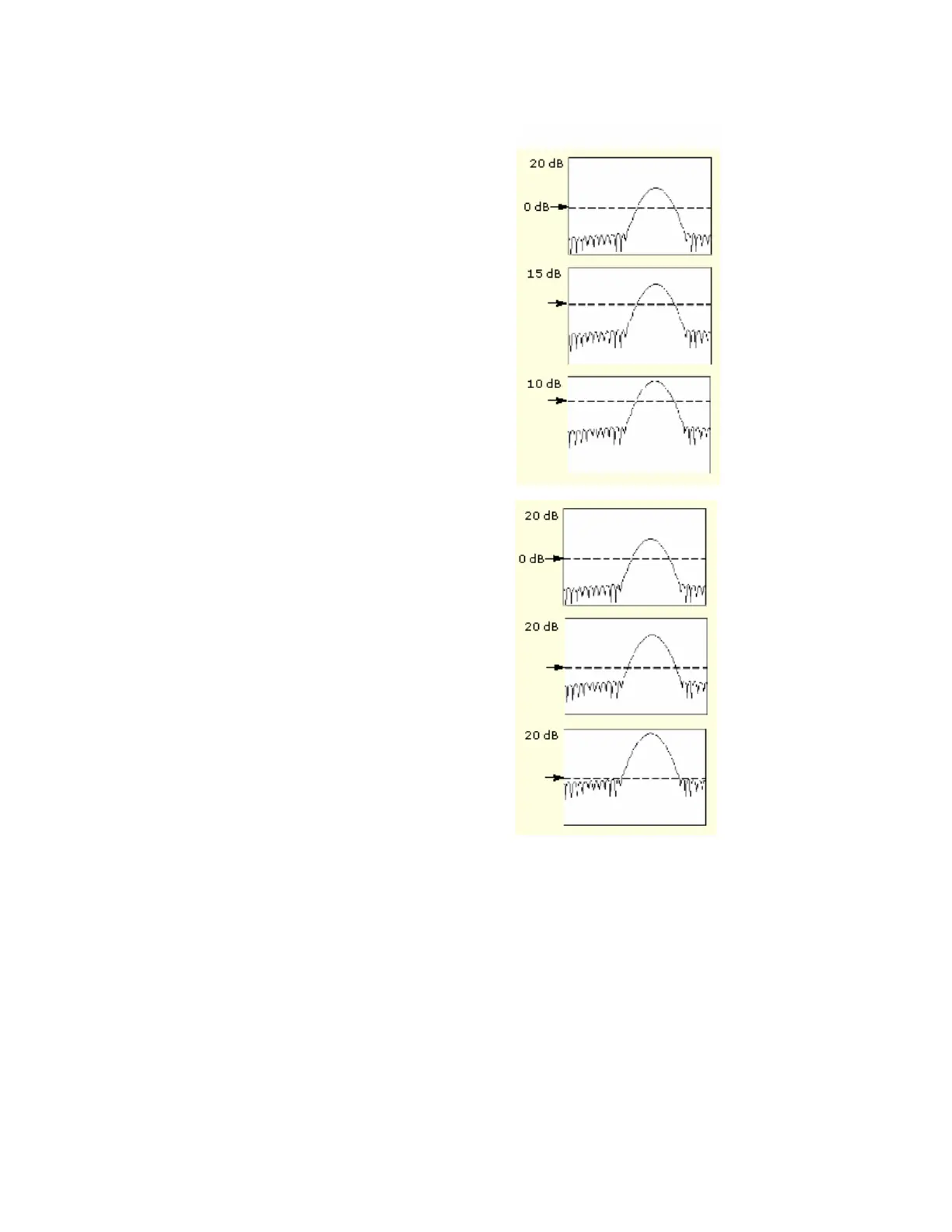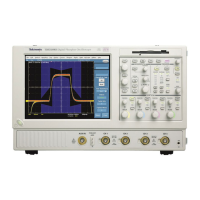272
Reference Level: This sets the vertical position
of the displayed spectrum. Its value is the
magnitude at the top of the display screen.
When this control is adjusted, the spectral
waveform along with its zero reference marker
move vertically on the screen as shown. This
control does not change the spectral data.
Reference Level Offset: This changes the value
of Ref in the equation for dB shown above.
Unlike the Reference Level control, this control
actually changes the output data values in the
spectrum. Zero dB is shown on the display
screen by the marker associated with the
spectral waveform. Adjusting the Reference
Level Offset causes the spectral waveform to
move vertically with respect to the waveform
reference marker as shown. This moves the
waveform without changing the Reference
Level control setting. Sometimes it is beneficial
to adjust this control so that the peak of a
fundamental is at zero dB. Then you can
measure other harmonics in terms of how many
dB they are away from the fundamental. Click
the dBm button to preset this level to the
equivalent of 1 mW into 50 ohms.
Real and Imaginary Magnitudes: You can display the linear magnitude of the real data or the
imaginary data in the spectrum. This is useful if you process the spectrum off line and transform it
back into a time domain trace. You can save the real and the imaginary spectrum into reference
memory, and export the waveforms directly into Mathcad, MATLAB, or Excel documents to
update in real time.
To turn on a real or imaginary spectrum, click the Math menu button, select Define/Edit
Expression Editor, and select the Freq tab. Click either the Real or the Imag buttons and enter an
expression. Click the appropriate channel button, and click Apply.

